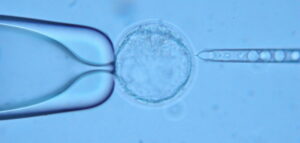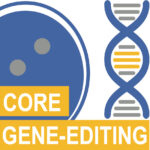Our lab has a longstanding expertise in the generation and establishment of genetically modified mouse models. This includes state-of-the-art gene-editing technologies utilizing the CRISPR/Cas9 system. We offer the following packages and services for the generation of gene-edited mice:

1) Standard knockout
Generation of a ubiquitous gene knockout using the CRISPR/Cas9 System in combination with non-homologous end-joining (NHEJ) repair. Using a combination of two different guide RNAs, we can induce genomic deletions of a few basepairs up to approx. 5 kbp to disrupt a genes reading frame or to deplete whole genomic regions. Guide RNAs are delivered into fertilized oocytes together with Cas9 protein via electroporation to induce gene-editing at early stages of embryonic development.
2) Introduction of precise point mutations, small insertions or tags
Precise point mutations or small tags can be installed using the CRISPR/Cas9 system in combination with homology directed repair (HDR). A single guide RNA and Cas9 protein is introduced into fertilized oocytes to induce a double strand break next to the genomic location where the edit should be installed. Co-delivery of short ssODNs encoding the desired edit and homology arms flanking the targeted region result in an occasional incorporation into the DNA via HDR. Constructs are delivered into zygotes via electroporation or intracytoplasmatic microinjection.
3) Conditional knockout
Conditional strategies require the insertion of two loxP sites flanking the target exon(s). To achieve this, we aim to use the Easi-CRISPR approach using long ssODNs for efficient HDR. Constructs are delivered via pronuclear or intracytoplasmatic injection into zygotes.
For the generation of gene-edited mice we routinely use oocytes collected from superovulated B6D2F1 females. This hybrid strain is derived from crossings of C57BL/6J (B6) females and DBA/2 (D2) males.
Not the method found you were looking for?
 In addition to CRISPR/Cas9 based approaches we also offer „classical“ approaches for the generation of transgenic mice including blastocyst injections of modified embryonic stem cells (ES cells) as well as DNA microinjection. Please contact us for further details.
In addition to CRISPR/Cas9 based approaches we also offer „classical“ approaches for the generation of transgenic mice including blastocyst injections of modified embryonic stem cells (ES cells) as well as DNA microinjection. Please contact us for further details.

